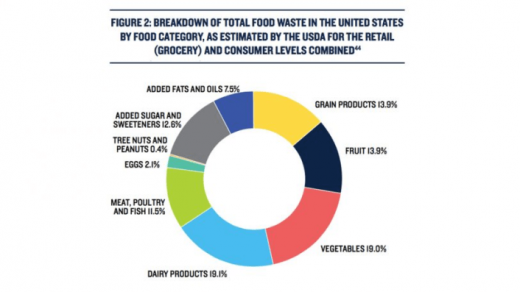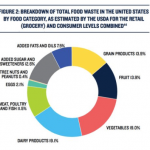Here’s How We Can Actually Stop Wasting So Much Food
The U.S. throws away $212 billion in food every year, about $1,800 for an average family of four. We waste 1,250 calories per day per person–about half the daily recommended calorie intake. Diverting just a third of what currently goes to landfills would be enough to feed 42 million food-insecure Americans. Diverting a quarter of worldwide waste could feed everyone else.
But you may already know this. Staggering statistics like these are repeated often, and they seem to be sinking in. According to an internal Rockefeller Foundation analysis, the number of media articles about food waste grew 25% per year from 2011 to 2016, amounting to almost three times as many articles last year as five years earlier (we’ve done a few on this site). Almost half of Americans can now correctly identify how much food gets wasted (40%), one survey showed. Another, from the Ad Council, found that food waste is “important” or “very important” to 74% of respondents.
Consumer awareness of food waste is “spreading like wildfire,” a new report says. This October, mega-chef Anthony Bourdain is releasing a documentary on the issue, demonstrating how the topic is going mainstream. And in the last few years, businesses, government, and nonprofits have stepped up efforts to control the problem, which leads to needless hunger and environmental damage.
What’s not changed, so far at least, is how much food gets thrown away. The National Resources Defense Council (NRDC) report updates a previous one from 2012. In that time, the 40% figure has stayed more or less the same. Little has changed, it seems, even though the issue is higher on the agenda.
Margaret Brown, who works on food issues at the NRDC and reviewed the report, is optimistic that 40% number will drop as new initiatives take effect. For example, she points to how the U.S. Department of Agriculture and the E.P.A. have set a national goal to cut food waste 50% by 2030. The U.N. included a similar target in its Sustainable Development Goals, agreed two years ago. Hundreds of retailers and manufacturers have made commitments to halve waste by 2025 as part of initiatives from the Consumer Goods Forum and the E.P.A. Last year, the latter named 20 “food waste champions,” including Walmart and PepsiCo, that it said were leading the way.
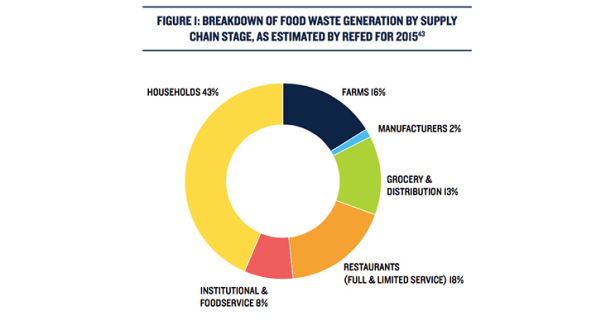
Meanwhile, nine states now give tax breaks to businesses as an incentive to cut their waste piles. Following the passage of a new law this year, New York farmers, for instance, can now claim up to $5,000 a year in credits, up to 25% of the value of the food they donate to emergency food programs. Brown says this will encourage farmers to pick produce from fields and give it to food banks, rather than leaving it to rot in fields when they don’t believe they can sell it. About 16% of waste comes from farmers throwing away food for cosmetic reasons, or because there’s insufficient value in selling it on the open market.
The report recommends policies like standardizing food labeling to reduce confusion around “best by,” “use by,” “sell by,” “best before,” “enjoy before,” and other variations of the same. These labels lump together best-eating tips with real food safety concerns, needlessly leading people to throw away food that’s perfectly edible. In 2016, the USDA asked food manufacturers and retailers to use “Best if Used By” as a standard label phrase. And, this year, two food industry associations announced guidelines limiting labels to “Best if Used By” (a product quality tip) and and “Use By” (for perishable products that could make you sick if they’re not consumed at the right time). The NRDC would also like Congress to take up the issue. Two bills–the Food Date Labeling Act and the Food Waste Transparency Act–have been proposed so far, though they are yet to make it to committee or a vote.
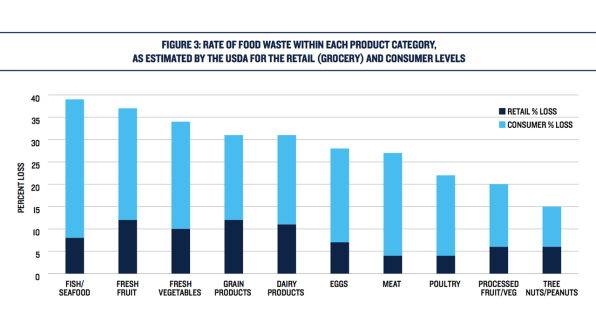
The consumer end of things–which accounts for about 40% of total waste–may be the hardest nut to crack. Though many people are concerned about the issue, they also tend to dramatically underestimate their own role. Three-quarters of Americans say their waste is less than the national average, one study found (which, in actuality, is impossible). Other research shows that consumers underreport their waste by 40% (yes, a recurring percentage), compared to what’s actually in their garbage.
The report gives a lot of suggestions for saving food (and money) including buying and serving smaller portions, using stores that avoid waste, freezing more leftover food and purchasing “imperfect” produce. The NRDC’s Save the Food site has many more ideas.
Reducing waste doesn’t seem impossible, given greater consumer awareness. Following a big campaign in the U.K. called Love Food Hate Waste, wasted purchases fell by 500 grams per person per week, resulting in total food sales staying constant while the British population swelled by 5% between 2007 and 2012. In the U.S., we may now waste 10 times more food than the average person in Southeast Asia or sub-Saharan Africa. But it wasn’t always like that. In the 1970s, we wasted 50% less food than today. That suggests that inefficiency in the food system isn’t so much inevitable, but rather a choice we make.
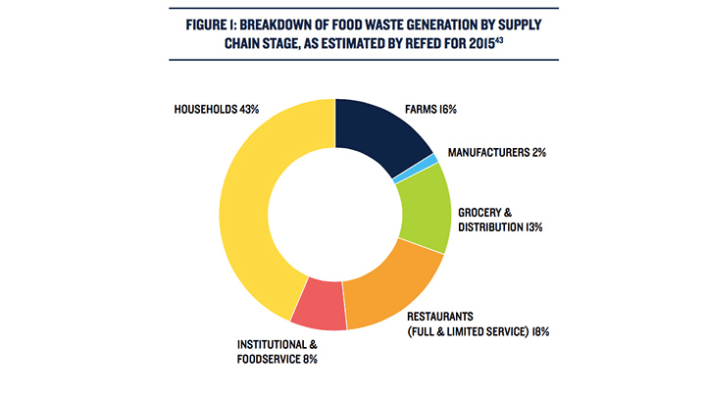
These charts illustrate the major work that still needs to be done to stop food waste.
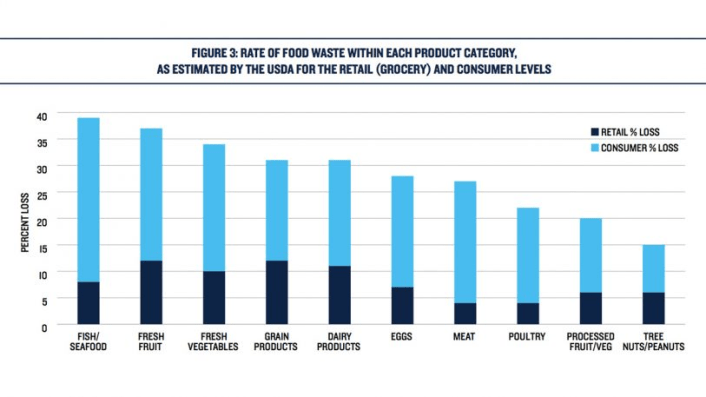
Here’s How We Can Actually Stop Wasting So Much Food
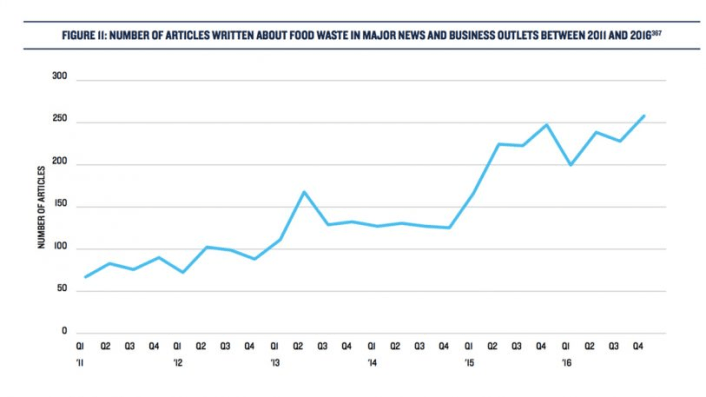
Here’s How We Can Actually Stop Wasting So Much Food
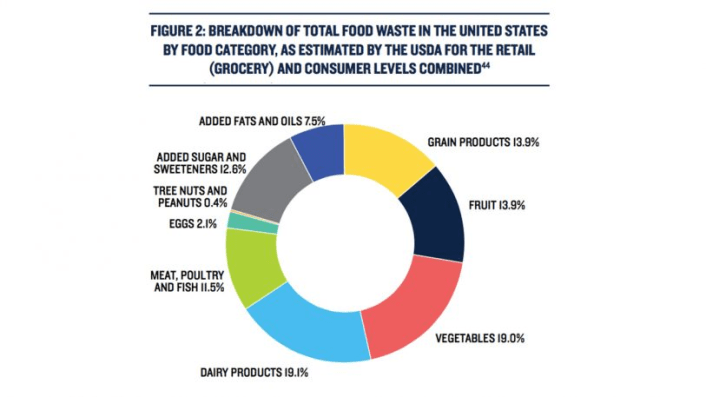
Here’s How We Can Actually Stop Wasting So Much Food
Fast Company , Read Full Story
(24)

